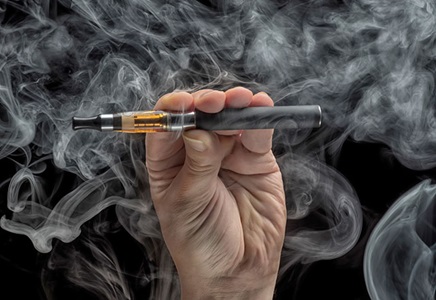Lung Cancer Risk Factors
What You Need to Know
- Approximately 90 percent of lung cancers are caused by cigarette smoking.
- Additional risk factors for lung cancer include secondhand smoking, a family history of lung cancer, some vitamins and exposure to chemicals like radon and asbestos.
Lung Cancer Risk Factors
Cigarette smoking is the most important risk factor in the development of lung cancer. It is estimated that as many as 90 percent of lung cancer diagnoses could be prevented if cigarette smoking were eliminated. Exposure to certain industrial substances such as arsenic, some organic chemicals, radon, asbestos, radiation exposure, air pollution, tuberculosis and environmental tobacco smoke in nonsmokers also increases a person’s risk of developing lung cancer.
Family History
Family history may increase a person’s risk of developing lung cancer; that risk multiplies if you are exposed to other risks, such as smoking.
If you have a family member who had lung cancer, you are as twice as likely to develop cancer as someone without a family history of lung cancer. For people who have two or more first-degree relatives (brothers, sisters, parents or children) who developed lung cancer, the chances of developing lung cancer are even higher. In families with a history of lung cancer, there is no such thing as a safe cigarette or a safe level of exposure to smoking.
Secondhand Smoke
Being exposed to secondhand smoke — the smoke that comes from a burning cigarette or other tobacco product or that is exhaled by smokers — also increases the risk of developing lung cancer. Though it comes in smaller amounts, the same cancer-causing agents are inhaled through secondhand smoke.
Occupational Exposure
Exposure to asbestos is known to cause mesothelioma. While it is no longer used, asbestos was once commonly used in building materials and insulation. People who worked in construction, shipbuilding, certain types of manufacturing, as firefighters and in other related fields may have been exposed to asbestos over the years of their employment. Of all mesothelioma cases reported, 70 percent to 80 percent have been linked to exposure to asbestos in the workplace.
Other toxins — such as arsenic, nickel and chromium, as well as tar and soot — can also increase the risk of developing lung cancer, particularly for people who smoke. The risks of occupational exposures are increased for those who smoke.
Environmental Exposure
Homes and offices may harbor chemicals or other substances that increase the risk of cancer for those who live or work in them. The biggest culprit is radon. In people who have never smoked, about 30 percent of deaths caused by lung cancer have been linked to being exposed to radon. Like occupational exposures, the risks of environmental exposure are increased for those who smoke.
Testing for radon is fairly simple to do, either by using a do-it-yourself radon test kit or by hiring a qualified tester. The Environmental Protection Agency lists where to find radon information in your area.
Vitamin Supplements
It was once thought that vitamin supplements like beta carotene could reduce the risk of lung cancer in heavy smokers. However, there is now substantial evidence that taking beta carotene supplements increases the risk of lung cancer, especially in smokers who smoke one or more packs a day. The risk is higher in smokers who have at least one alcoholic drink every day.






